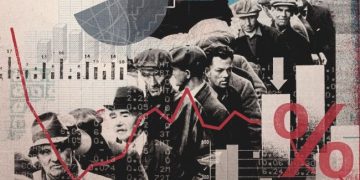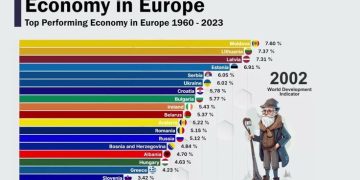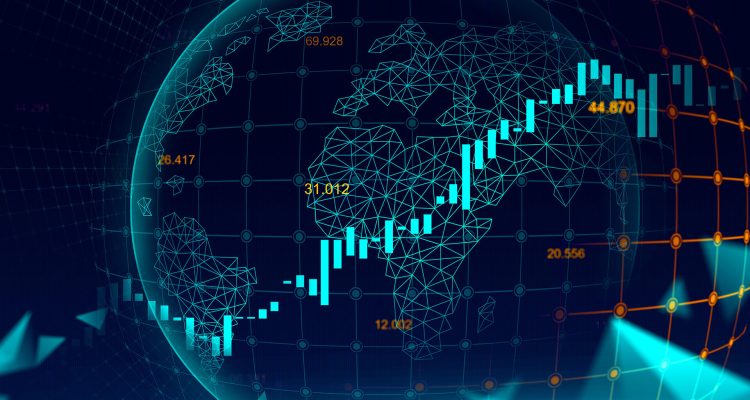The Grim Reality:
The world economy confronts a grave truth: since the 2008-2009 global financial crisis, global economic expansion has not merely ebbed and flowed cyclically—it has persistently decelerated. Without strategic policy interventions and leveraging emerging technologies, a return to the vigorous growth of yesteryears appears improbable.
Dim Horizons Ahead:
Faced with numerous adversities, the outlook for future growth dims. Our latest World Economic Outlook forecasts that by 2029, global economic growth will slow to just over 3%. Our analysis indicates that, by the end of this decade, the pace of expansion could fall to nearly 1 percentage point below the pre-pandemic average (2000-2019). Such a decline could see progress in improving living standards regress, with uneven economic deceleration across affluent and impoverished nations potentially undermining prospects for global income convergence.
Endangered Debt Sustainability:
A sustained scenario of low growth rates coupled with high interest rates may jeopardize debt sustainability, hence restraining governments’ capacity to counter economic slowdowns, invest in social welfare, or environmental initiatives. Furthermore, tepid expectations for economic growth could suppress investments in capital and technology, possibly leading to an even slower pace of economic advancement. Geopolitical fracture, detrimental unilateral trade measures, and industry policies introduce further formidable barriers.

Hope on the Horizon:
Yet, our newest analysis sheds light on a hopeful possibility. A synergistic application of policies aimed at improving labor and capital allocation among firms and addressing labor shortages due to the aging population in key economies could revive mid-term growth.
Fundamental Drivers of Growth:
Labor, capital, and the efficiency of both resources (known as total factor productivity, TFP) drive economic expansion. Among these elements, over half the decline in economic growth since the financial crisis is attributable to a slowdown in TFP growth. TFP increases with technological advancements and better resource allocation, channeling labor and capital towards more productive enterprises.
Importance of Resource Allocation:
Our analysis underscores the importance of resource allocation for economic growth. Yet, in recent years, the efficiency of resource distribution among enterprises has waned, dragging down TFP and, in turn, global growth rates.
The Compounding Issue of Misallocation:
This exacerbation of misallocation largely results from persistent policy-related obstacles that confer preferential treatment or penalties on certain enterprises without regard to productivity, thus hampering the flow of capital and labor to the most productive firms. This limits corporate growth potential. If misallocation trends had not worsened, TFP growth rates could have been augmented by 50%, and the slowdown in economic growth would not have been as severe.
Additional Growth Inhibitors:
Two more factors contribute to decelerated economic growth. In major economies, the proportion of working-age population is shrinking, weighing down labor growth. Concurrently, a lethargic business investment impedes capital formation.

Mid-Term Pressures:
Projections by the United Nations suggest intensifying demographic pressures in most major economies, leading to unbalanced global labor supply and hampering global economic growth. While low-income economies and certain emerging economies will see a swell in working-age populations, China and most developed economies (apart from the USA) will confront labor shortages. By 2030, the global growth of the labor force is anticipated to dip to a mere 0.3%—a fraction of pre-pandemic averages.
Correcting Misallocation:
There may be a gradual self-correcting of some resource misallocation as labor and capital tilt toward more productive enterprises. This could alleviate the dwindling rate of TFP growth, albeit structural and policy barriers may delay this progress. Technological innovations could also relieve the slowdown in TFP.
Projected Continued Decline:
Overall, the upward trajectory of TFP growth is likely to persist in its decline due to increasing difficulty in achieving technological breakthroughs, stagnation in educational attainment, and slowing catch-up by underdeveloped economies.
Revitalizing Global Growth:
In the context of rapid AI development, surmounting public debt, and geopolitical economic divisions, our analysis scrutinizes the impact of related policies on labor supply and resource allocation.
Scenarios of Policy Shifts:
We examined scenarios where policy shifts—ambitious yet viable—aim to rectify resource misallocation by enhancing product and labor market flexibility, trade openness, and financial development. We also considered policies intended to enrich labor supply or productivity, including reforms in retirement and unemployment benefits, support for childcare provisions, expansion of retraining and skill acquisition programs, facilitation of immigrant worker integration, and the dismantling of societal and gender barriers.
Findings on Influencing Growth:
Our findings reveal the relative limit of benefits deriving from increased labor participation, the integration of more immigrant workers into developed economies, and optimized talent allocation in emerging markets.
Crucial Reforms for Mid-Term Growth:
In contrast, reforms that enhance productivity and fully utilize the potentials of artificial intelligence are critical for rejuvenating mid-term growth. Our projections suggest that with dedicated policies to bolster market competition, enhance trade openness, expand access to financial services, and strengthen labor market flexibility, we could raise the global economic growth rate by around 1.2 percentage points by 2030. The potential of AI in improving labor productivity is yet uncertain but could play a significant role as well, potentially lifting global economic growth by 0.8 percentage points, contingent on AI adoption and its labor impact.
Innovation-Driven Policy for Long-Term Prosperity:
Looking forward, innovation-driven policies will be key to sustaining global growth.




























